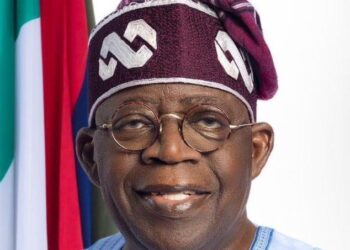Lagos – For almost 49 years, the Nigerian currency has been on a consistent downward trend. Although the Naira’s free fall observed last year appears to have come to an end, a glance at the previous era suggests that we should be concerned.
According to data analyzed by the International Monetary Fund, the Nigerian currency rate has depreciated by 10.6% per year since 1973.
This was revealed in the “Nigeria: Selected Issues Paper” study.
Nigeria currently operates a managed exchange rate region, where the exchange rate between the naira and the US dollar trades at N416.25/$1 at the Investors and Exporters (I&E) window,
The Investors and Exporters (I&E) window is where forex is traded officially.
However, the exchange rate at the parallel market trades at N575/$1, showing a difference of N158.75.
The International Monetary Fund stated that Nigeria’s currency depreciation is far above similar economics.
IMF said, ”exchange rate underwent more persistent depreciation.
Nigeria’s long-term rate of currency deprecation (on average 10.6 percent annually since 1973) was 1.5 times higher than both EMDE (7.2 percent) and SSA (7 percent).
Given limited availability of long-term data, it is difficult to estimate the exact reasons.“
IMF also stated that an inspection of Nigeria’s nominal effective exchange rate (NEER) should disrupt compared to similar economics.
“However, the historical behaviour of NEER shows that Nigeria’s NEER depreciation episodes tended to be more abrupt and disorderly compared with EMDE and SSA peers, where exchange rate adjustments have been far more continuous and smoother,“ IMF added
Nigeria’s historical inflation has been higher than its peers.
Its long-term average rate of CPI inflation (1971-2020) was 16 per cent, which is higher than both SSA (13 percent) and EMDE (13.6 percent) averages. Compared to SSA (7.2 per cent) and EMDE (6.2 per cent) median, the difference is more pronounced.
Why the Naira is falling
Nairametrics spoke to experts about the economic phenomenon affecting the country.
Dr. Oladipo Olabisi, Lecturer of Economics at Landmark University said the problems start with Nigeria’s key macroeconomic indicators.
She said, “Further depreciation should be expected as long as our policies do not have the capacity to enable effective macroeconomic indicators.
As long as Nigeria’s macroeconomic indicators are weak naira value will keep depreciating”
She added that “The ineffective macroeconomic tools is causing frictions in the labour market.
Nigeria’s economy is facing serious labour supply shock (unemployment) and wage shock (wage reduction).
NBS (2021) recorded Nigeria’s unemployment rate has risen to 33.3 per cent.
Some other firms that could not keep up with the shocks had to fold up. All these are attributed to naira devaluation.”
Dr. Oladipo spoke about the ineffectiveness of Monetary Policy (MP) in achieving its objectives.
She said “Nigeria’s MP instruments are not effective enough to meet their targets.
In my opinion, the CBN has fallen prey of pressure via the political manipulation of fiscal instruments. Thereby affecting the credibility of their policies towards the valuation of the naira.”
She added that “the is simply the ratio of export prices to import prices. In Nigeria, the prices of imports is rising faster than that of export, thereby causing naira devaluation.
For Nigeria that is an oil-dependent country, the frequent shocks to oil price have caused naira devaluation in Nigeria.”

















